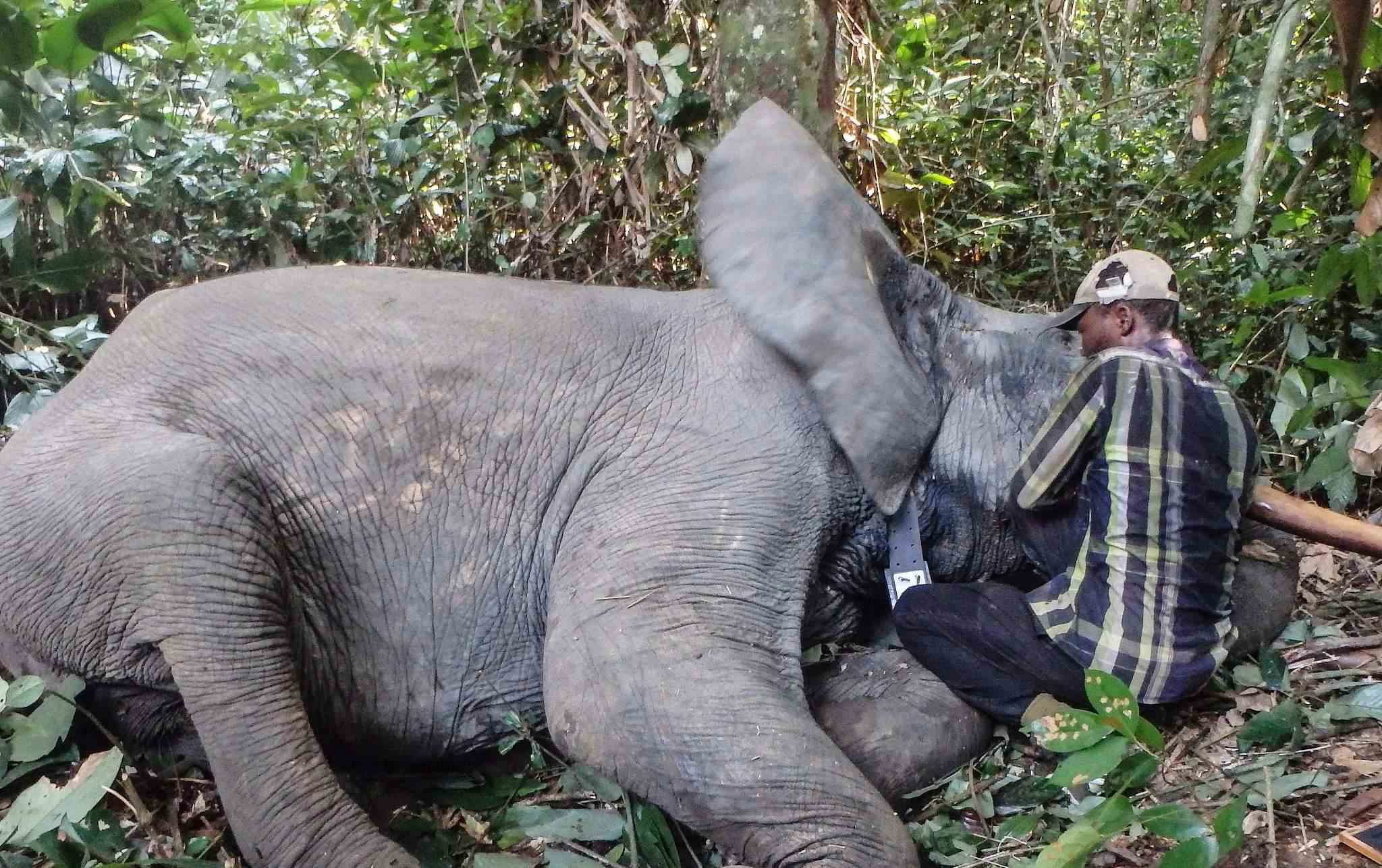
Animal
18:09, 08-Feb-2018
Gabon fights elephant poaching with hi-tech tracker collars

Ever tried to put a GPS real-time tracking collar on a five-ton animal?
Well, in Gabon conservationists have begun using the devices on elephants; tracking and drugging the animals, before attaching the high-tech gadgets in a bid to stop poachers and ivory trafficking.
But it is not a simple task.
Each operation needs around five to seven men, including a vet, scouts and trackers, to guide the group through dense jungle and locate the often shy animals.
"They have to fit one or two GPS collars a day," says Jean-Baptiste Squarcini, general secretary of Gabon's national parks agency (ANPN).
"It's very dangerous with our men repeatedly being charged by elephants."
Once an elephant is spotted, a vet will move forward and use a compressed air rifle to fire a dart carrying etorphine: A semi-synthetic opioid more than 1,000 times more powerful than morphine.
"Too heavy a dose will kill the elephant. Too weak, it can escape. You have to get it right," Squarcini notes.
"When it has been hit, you have to be ready to avoid a possible charge."

The authorities are waging virtual war on the lucrative ivory trade and the poachers who come from neighboring Cameroon and Congo, driving deep into Gabon in militarized columns with shooters, trackers and porters. /AFP Photo
The authorities are waging virtual war on the lucrative ivory trade and the poachers who come from neighboring Cameroon and Congo, driving deep into Gabon in militarized columns with shooters, trackers and porters. /AFP Photo
Like a good hangover
After the elephant is asleep on the ground, the team carry out a health check and take samples while a giant black GPS collar is fitted.
The whole process takes around 10 minutes and the team then take cover, sometimes climbing up trees, before the animal is woken up with an antidote.
"The animal wakes, a little stunned, like from a good hangover," smiles Squarcini.
South African veterinarians helped local colleagues fit 20 elephants with GPS collars last December in the Mwagna and Ivindo parks in north east Gabon.
The neighboring Minkebe park will join the collar campaign during February.
For 45 days, an ANPN team led by South African conservationist Peter Morkel will travel through the forest covering about 20 kilometers (12 miles) a day.

Gabon boasted 45,000 elephants a decade ago, the biggest forest population in central Africa but has since lost 15,000 to poaching. /AFP Photo
Gabon boasted 45,000 elephants a decade ago, the biggest forest population in central Africa but has since lost 15,000 to poaching. /AFP Photo
Danger zones
The wanderings of some of the tagged elephants -- including Junior, Boniface, Syndie, Kate and Zara -- appear on a map in ANPN operation center in the capital Libreville.
A large screen shows live satellite input from the Global Positioning System (GPS) collars, which displays a warning if an animal gets too close to an inhabited area or does not move for too long and may be in danger.
"It enables us to see when they move into danger zones, places where we regularly find carcasses and we know that poachers are present," explains Parfait Ndong Ondo, one of the center's spotters.
One elephant, "Patrice", is being closely watched as he has strayed out of Ivindo national park and is moving towards a railway line.
"He could destroy the harvest or stray into an area where poachers are active," says Squarcini.
"We know that we have to intervene."
Field rangers are sent out to find "Patrice" and lead him back to safety.

File: Rangers stopping pirogues to check they do not transport weapons or other forbidden goods, on a stretch of the Ivindo river in the Ivindo National Park in Gabon on Nov. 12, 2015. /VCG Photo
File: Rangers stopping pirogues to check they do not transport weapons or other forbidden goods, on a stretch of the Ivindo river in the Ivindo National Park in Gabon on Nov. 12, 2015. /VCG Photo
'15,000 elephants lost to poachers'
The dense tropical rain forests of the Minkebe national park in northern Gabon are on the front line of a war with poachers.
Bordered by Cameroon and Congo, the Belgium-sized area has been a target for central African gangs looking to make some quick cash from Africa’s white gold.
Gabon boasted 45,000 elephants a decade ago, the biggest forest population in central Africa, but Squarcini blames poachers for killing 15,000.
The stark reduction in forest elephant numbers reflects the shocking slaughter of elephants elsewhere.
According to the first ever pan-African survey of savanna elephants in 2016, the Great Elephant Census, numbers of savannah elephants are estimated to be about 352,000, down from 1.3 million in 1979.
11429km
Source(s): AFP

SITEMAP
Copyright © 2018 CGTN. Beijing ICP prepared NO.16065310-3
Copyright © 2018 CGTN. Beijing ICP prepared NO.16065310-3